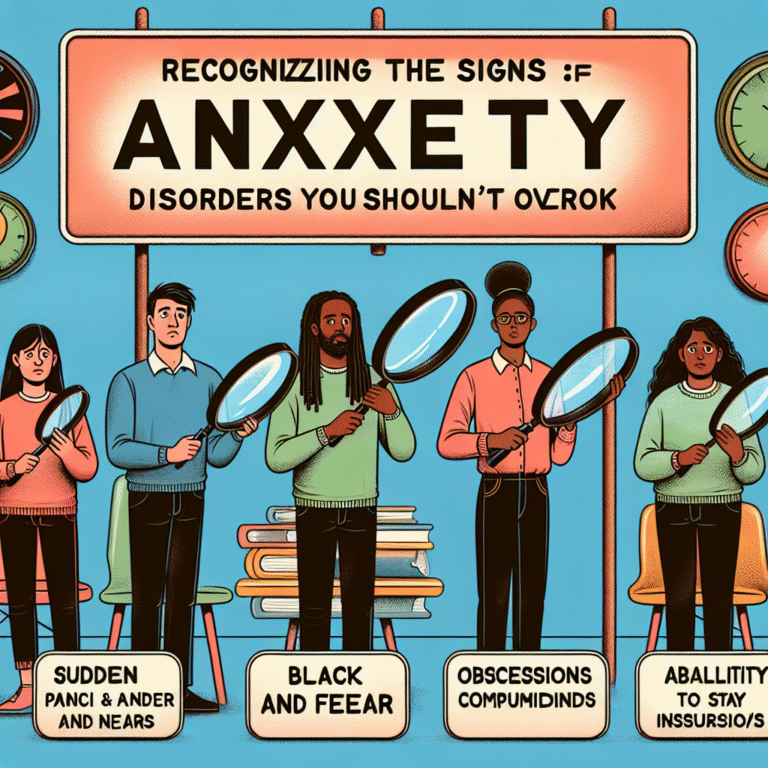
Unlocking the Mind: Understanding Cognitive Behavioral Therapy and Its Essential Impact
Introduction
In a world often defined by chaos and uncertainty, mental health has risen to the forefront of societal concerns. With the growing prevalence of anxiety, depression, and other mental challenges, the quest for effective solutions is more critical than ever. Unlocking the Mind: Understanding Cognitive Behavioral Therapy and Its Impact serves as a guiding light for those seeking clarity and practical strategies for mental well-being. Cognitive Behavioral Therapy (CBT) has emerged as one of the most effective therapeutic approaches, empowering individuals to change their thought patterns and behaviors. This article delves into the intricacies of CBT, illustrating its profound influence on mental health and well-being while providing actionable insights for both individuals and professionals alike.
What is Cognitive Behavioral Therapy?
Cognitive Behavioral Therapy (CBT) is a psychotherapeutic approach that emphasizes the interrelationship between thoughts, feelings, and behaviors. Developed in the 1960s, CBT is grounded in the understanding that distorted thinking leads to emotional distress and maladaptive behavior.
The Fundamental Principles of CBT
Cognitive Restructuring: The primary aim is to challenge and change unhelpful thinking patterns.
Behavioral Interventions: Incorporating practical exercises to change behavior and improve emotional responses.
- Collaborative Therapeutic Relationship: The therapist and client work together as a team to establish goals and tackle challenges, establishing a sense of partnership.
The Mechanism of Change
CBT operates on the premise that by altering one’s thoughts, it’s possible to change feelings and behaviors. This transformative process enables individuals to break free from destructive cycles, thus unlocking the mind and fostering personal growth.
The Science Behind CBT
Evidence-Based Effectiveness
Research has shown that CBT is highly effective for a variety of mental health disorders, making it a preferred choice for both therapists and patients. A systematic review published in Psychological Bulletin highlights that CBT consistently outperforms many other forms of therapy in treating anxiety disorders and depression.
| Disorder | Effectiveness of CBT |
|---|---|
| Major Depressive Disorder | 60% improvement rate |
| Generalized Anxiety Disorder | 70% improvement rate |
| PTSD | 50% improvement rate |
Case Study: Emma’s Journey
Emma, a 32-year-old graphic designer, struggled with anxiety that severely impacted her daily life. Through 12 sessions of CBT, she learned to identify her anxiety triggers and reshape her negative thought processes. By the end of her treatment, Emma reported a 70% decrease in anxiety levels and could return to her passion for design without debilitating fear.
Analysis: Emma’s case highlights CBT’s capacity to bring about tangible changes in one’s emotional state by equipping individuals with the tools to confront their fears.
Practical Applications of CBT
Developing Coping Strategies
CBT isn’t just about problem-solving; it’s about equipping individuals to handle life’s challenges with resilience. The following strategies are integral to the CBT approach:
Identifying Cognitive Distortions: Recognizing common cognitive distortions, such as all-or-nothing thinking and catastrophizing, helps individuals reshape their perceptions.
Behavioral Activation: Encouraging engagement in activities that promote positivity and well-being can counteract depressive moods.
- Mindfulness Techniques: Integrating mindfulness meditation can enhance self-awareness and help manage stress levels.
Real-World Impact: A Case Study of David
David, a 45-year-old teacher, felt overwhelmed by stress and was considering leaving his profession. When introduced to CBT, he identified his cognitive distortions about workload and learned to prioritize tasks effectively. Over a span of three months, David was able to restore his enthusiasm for teaching.
Analysis: David’s experience demonstrates how CBT can reshape not only thoughts but also behaviors, leading to a more satisfying work-life balance.
The Impact of CBT on Everyday Life
Improved Relationships
CBT fosters better communication and conflict resolution skills, enhancing interpersonal relationships. By encouraging self-reflection and reducing negative thought patterns, individuals develop healthier connections with others.
Increased Emotional Resilience
Those who engage in CBT report feeling better equipped to handle stress, leading to an overall increase in emotional resilience. This builds a robust foundation for facing life’s inevitable challenges.
Unlocking the Mind: Group Therapy with CBT
The Power of Community
Group therapy can amplify the benefits of CBT, providing support and structure while allowing participants to share experiences. This communal aspect fosters connection among participants, breaking down feelings of isolation.
Impactful Case Study: Support Group for Anxiety
A local support group incorporated CBT techniques to assist individuals struggling with anxiety. Through sharing personal experiences and practicing exposure techniques together, members reported significant decreases in anxiety and improvements in their quality of life.
Analysis: The success of group CBT indicates the importance of social support in the therapy process, illustrating the communal aspect of unlocking the mind.
Challenges of CBT and Misconceptions
Common Misunderstandings
Despite its success, many still hold misconceptions about CBT, including:
CBT is a Quick Fix: While effective, CBT requires commitment and time to yield lasting results.
- CBT is Only for Severe Disorders: CBT can also benefit individuals without diagnosed disorders by providing coping mechanisms.
Addressing Challenges
Therapists must navigate both misunderstandings and challenges during treatment, fostering a safe space for clients to express doubts and ask questions.
Conclusion
Unlocking the Mind: Understanding Cognitive Behavioral Therapy and Its Impact reveals the transformative power of CBT in fostering mental well-being. Through practical strategies and real-world case studies, we see that CBT is not merely a treatment but a toolkit for life. By equipping individuals to challenge their thoughts, develop resilience, and enhance their relationships, CBT holds the promise of a brighter, healthier future.
Key Takeaway
As we embark on our own journeys of self-improvement, let us remember that the key to unlocking a fulfilling life may very well be changing the way we think. Embrace the potential of CBT—because in understanding our minds, we can unlock unimaginable possibilities.
FAQs
1. How long does CBT take to work?
CBT typically involves 12 to 20 sessions, but individual results may vary based on personal circumstances and commitment.
2. What types of issues does CBT address?
CBT is effective for a wide range of issues, including depression, anxiety disorders, PTSD, and addiction problems.
3. Can I practice CBT techniques on my own?
Yes, many CBT techniques can be practiced independently, although guidance from a trained therapist is often beneficial.
4. Is CBT suitable for children?
Yes, CBT can be adapted for children and adolescents, providing age-appropriate techniques and tools.
5. Does CBT work for everyone?
While CBT is broadly effective, individual experiences may vary. It’s essential to find a therapist who can customize the approach to your specific needs.
By understanding and applying the principles of CBT, we can continue to explore the limitless potential of our minds, unlocking pathways to healing and growth.









